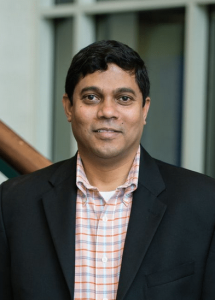‘Smart grid’ seen as essential to countering climate change
March 3, 2015Experts from 19 nations to gather at Clemson University
CLEMSON, SC – Some of the globe’s leading experts will gather at Clemson University to exchange the latest ideas about “smart grid” technology that is opening the door to more green energy and is helping more customers generate and sell their own power.
The gathering comes as South Carolina knocks over some of the hurdles to solar energy.
Utilities and conservation groups recently came to an agreement on net metering, a compensation plan for customers who send power to the grid. Last year’s Distributed Energy Resource Act also gave a boost to solar energy.
Delegates from 19 nations are expected to attend the 14th Clemson University Power Systems Conference from March 10-13. One of the several distinguished speakers will be Dr. David Ortiz, deputy assistant secretary in the Department of Energy.
At stake as experts meet will be the future of a century-old electrical grid that needs a steady, predictable flow of electricity to operate without blackouts.
Electricity has historically been generated in large, centralized plants and then sent to customers over a network of wires.
But experts in academia and industry see a future that incorporates new energy contributors distributed across the electrical grid. Those contributors could include customers who generate and store some of their own power and operators who run wind and solar farms as businesses.
The new additions mean that a system originally designed to predictably send power in one direction– from utility to customer– will now have to go both ways.
“Smart grid” technologies are the innovations that allow experts to control a more unpredictable flow of energy into the grid, which is essential to preventing blackouts.
The push to develop the technologies comes amid rising concerns that emissions from coal-fired power plants contribute to climate change.
At the same time, the globe’s rising population and quality of life is driving up demand for electricity, said Dr. Kumar Venayagamoorthy, the conference’s general chair, Clemson’s Duke Energy Distinguished Professor of Electrical and Computer Engineering and director of the Real-Time Power and Intelligent Systems (RTPIS) Laboratory .
“Sustainable smart grid technologies are absolutely essential to bringing us into the 21st century,” Venayagamoorthy said. “This conference will allow us to enrich our collective knowledge so as to improve the art of modern power and energy systems engineering.”
Clemson researchers are doing some of the leading work into smart grid technology, thanks in part to world-class facilities. Conference delegates will tour one of those facilities, the Real-Time Power and Intelligent Systems Laboratory.
Smart-grid technologies were born out of utilities’ need to balance the demand for electricity with the supply they are sending into the grid in the presence of variable generation and unpredictable power flows. A shortfall in supply can trigger cascading blackouts, as interconnected parts of the grid are successively overloaded.
The system that has been in place for decades has allowed utilities to make automatic adjustments based on customer demand. But adding new grid contributors, including some not controlled by utilities, introduces unpredictability and complexity that makes it more difficult to keep the electrical flow balanced.
As solar and wind energy play a bigger role, more of the power available for use in the grid will increasingly become subject to cloud covers and wind speeds.
While shortfalls in solar and wind power can be balanced with conventional means, weather forecasts are not accurate enough to predict with precision how much conventional power generation will be needed.
The balancing act is one of the many areas of research in Real-Time Power and Intelligent Systems Laboratory. That research is being conducted with industry partners and with support from the National Science Foundation.
Also in the lab, researchers are:
* Simulating how utilities monitor, control and optimize grid operations.
* Developing power electronics and a laboratory-scale micro-grid that could represent the future of how power is generated locally.
* Studying what researchers call “power hardware-in-the-loop,” which is carried out with a real-time grid simulator.
Those on hand at the conference will include business executives; professionals and experts in the electric power industry; and researchers in government and academia.
The conference has received technical co-sponsorship from IEEE, the IEEE Power and Energy Society, the IEEE Industry Applications Society and the IEEE Power Electronics Society.
“The conference is one of the leading gatherings of its kind,” said Dr. Dan Noneaker, chair of the Holcombe Department of Electrical and Computer Engineering at Clemson.
“Scholars from five continents will be here to share their knowledge. If you want to be on the cutting edge of power systems, this is the place to be.”
While the conference will be on Clemson’s main campus, it will also help shine a light on some of the world-class facilities housed at the Clemson University Restoration Institute (CURI) in North Charleston.
The eGRID center at CURI has a 15-megawatt “hardware-in-the-loop” simulator that can used to investigate how the grid and physical devices, such as wind turbines and solar arrays, interact with each other, under dynamic conditions.
The restoration institute also houses the world’s most advanced testing facility for wind turbine drive trains.



















